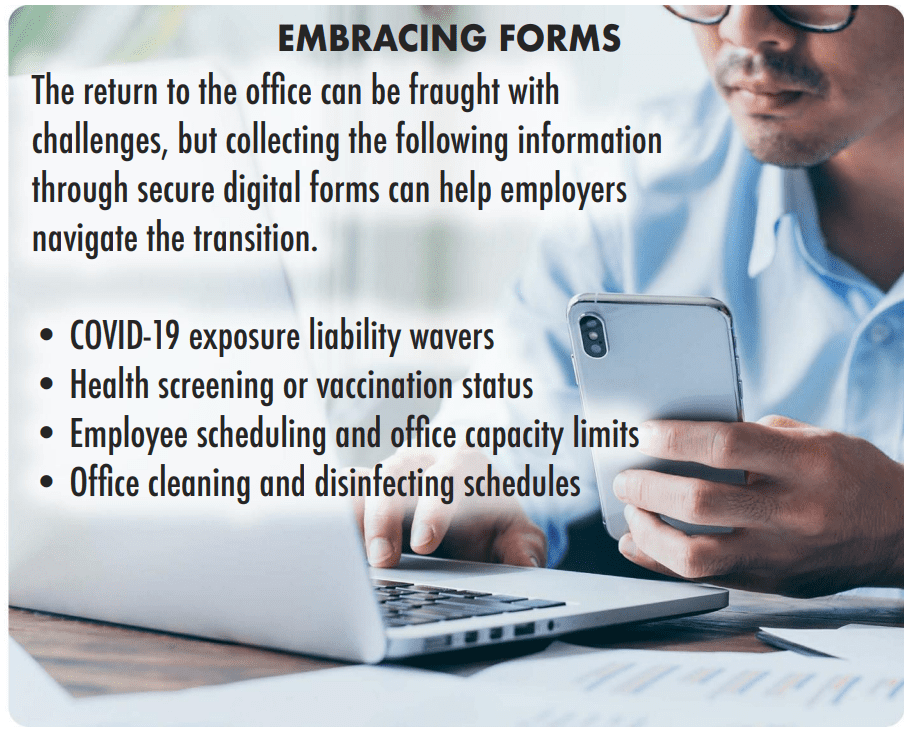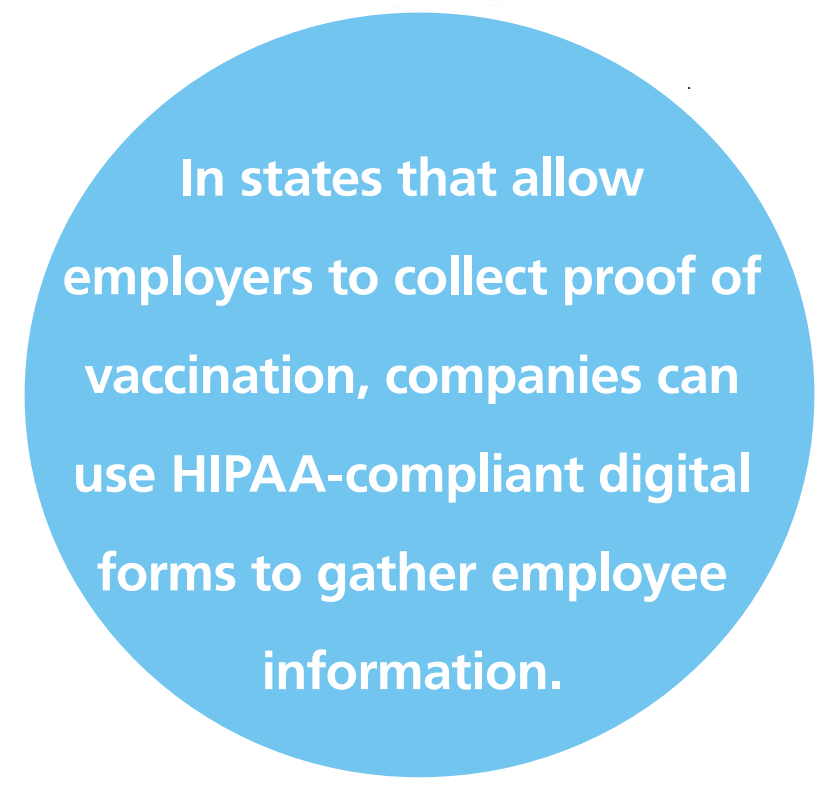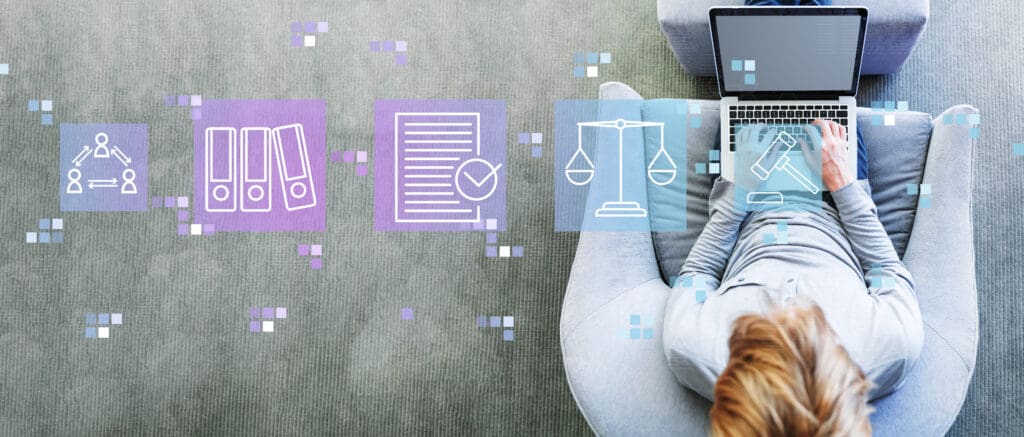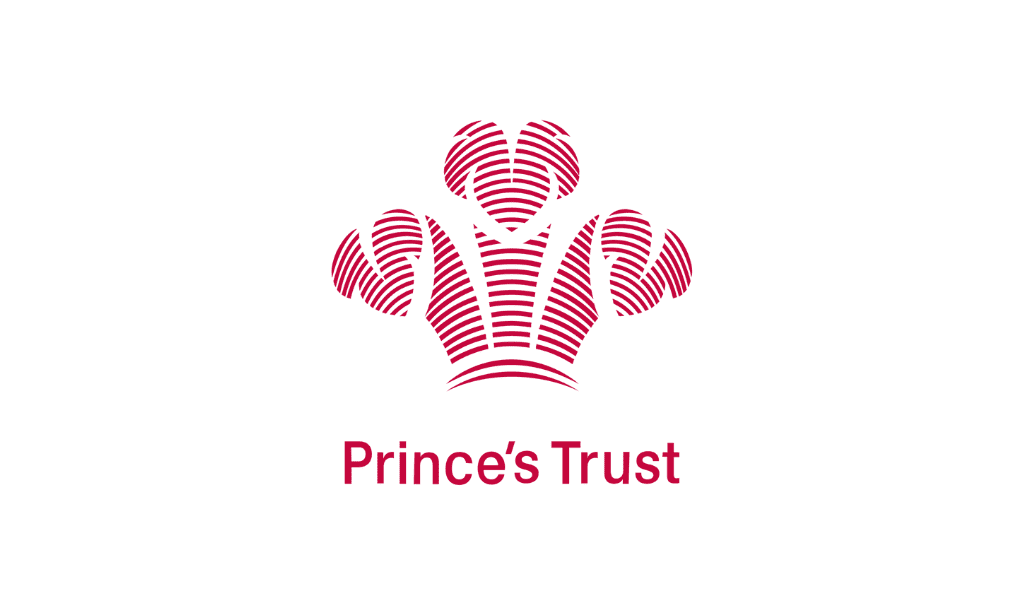No-code tech can help HR achieve a seamless office reopening.
By Chad Reid
The percentage of employed adults who worked from home rose slowly but steadily before the pandemic. According to Pew Research, about 20% of Americans did all or most of their jobs from home prior to the outbreak. This reached a height of 70% when the pandemic was at its peak, and now, well over half want to continue working remotely at least part of the time after the pandemic recedes. But one problem persists: Not all employers are on board.
Sentiment varies at each company, so to ensure a smooth transition back to the office, HR professionals will need to gather data to drive decision-making and create programs and policies to streamline reopening. But remote versus in-office preferences are only one part of the equation. Health and safety measures also loom large as companies look closer at reopening plans. Gathering data and creating workflows around health and safety issues will be essential. In both cases, digital forms can help HR teams overcome hurdles and successfully reopen.
Gauging Employee Sentiment
There’s no one-size-fits-all solution to the remote versus in-office conundrum. Some employees are looking forward to rejoining colleagues under the same roof while others want to continue working from home full time and still others favor a combination of the two. Employer sentiment varies as much as employee sentiment. Productivity levels during the pandemic convinced some company leaders that remote work is an option that can save money and reduce the company’s carbon footprint, while others believe the deficits outweigh the benefits.
But no matter where company leadership comes down on the question, it’s vitally important for HR teams to know what employees think so they can prevent misunderstandings and mitigate conflicts. Otherwise, mistakes can occur that damage company culture and productivity. For example, the Washingtonian‘s CEO wrote an op-ed arguing that remote work degrades the company culture and might tempt leaders to convert remote staff to contract workers, which didn’t sit well with the organization’s employees. They perceived it as a threat and responded with a work stoppage.
To avoid a similar situation, HR can gather data to gauge employee sentiment about future workplace configurations. Secure and customizable digital survey tools that require no coding expertise and can be accessed from any device can provide aggregate data that delivers clear insights. Using this data, HR can present company leadership with options that best align resources with company objectives, taking employee preferences into account in workplace redesign.
Managing the Return to Common Workspaces
Once HR has developed a strategy that works best for the company and its employees, the team will need to create plans for managing a return to facilities -whether that means a full return to the office or a hybrid plan where employees share spaces part time. Even companies with a fully remote workforce might host face-to-face meetings in the future and require a reopening plan.
There will be no single solution to this management challenge since many variables are in play, including the location and nature of the work. For example, some states restrict employers from asking employees for proof of a coronavirus vaccination. The following secure online forms can help HR manage reopening activities in a way that maximizes employee health and safety while minimizing employer liability.
• Liability waivers. To reduce legal exposure, companies can require employees (and visitors, contractors, etc.) to sign a liability waiver for potential COVID-19 exposure at the facility. Look for online forms that protect privacy, are capable of collecting l binding e-signature authorized person key provision is acknowledged and signed before returning employees or visitors are admitted.
• Screening and/or proof of vaccination. Several states, including Arkansas, Florida, and Texas, do not allow employers to ask for proof of vaccination as a condition of employment. But in places that do allow employers to collect proof, companies can use HIPAA-compliant digital forms to gather the information they need. Employers can also provide self-screening forms to help ensure employees who have experienced symptoms or been exposed to the virus stay home.
• Scheduling and capacity limits. Social distancing guidelines and capacity limits may still be in place as workplaces reopen. As a result, employers who are implementing a hybrid workplace model may need to limit the number of employees who are present at any given time. In both cases, online forms can help ease the transition by enabling employees to choose their preferred onsite days using customizable appointment features. This will prevent too many people from selecting the same days and/or times.
• Cleaning and disinfecting schedules. Another way to limit liability and keep employees safe is to ensure maintenance staff frequently clean and disinfect areas where coworkers gather. Digital forms can provide a way for the company to indicate which areas need to be addressed, provide time frames for cleaning, and log how frequently maintenance staff clean each area.
There’s optimism in the business world as the end of the pandemic comes into view, but there’s still work to be done to redefine normal life at work. HR will have a role to play in designing a workplace that meets the needs of the post-pandemic economy. There will be challenges along the way, but HR has demonstrated remarkable creativity and resilience over the past year.
HR leaders will need to maintain flexibility and creative thinking when it’s time to come back to work, whatever the configuration. Understanding employee preferences and safely managing reopening will be critical. In both cases, secure digital forms can play a key role, and now is the perfect time to think about how digital forms can help lighten the load for a seamless reopening.
Chad Reid is vice president of marketing and communications at JotForm.
















